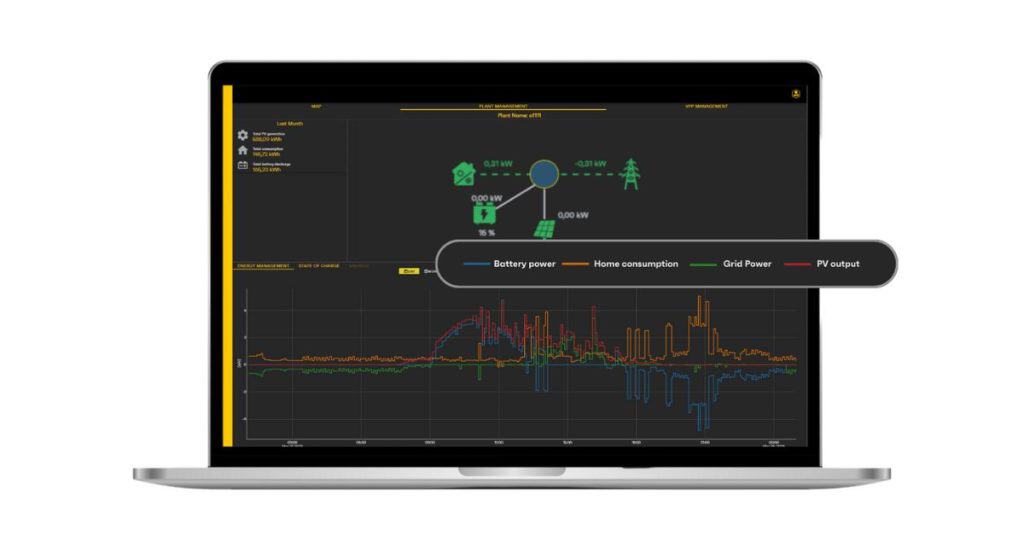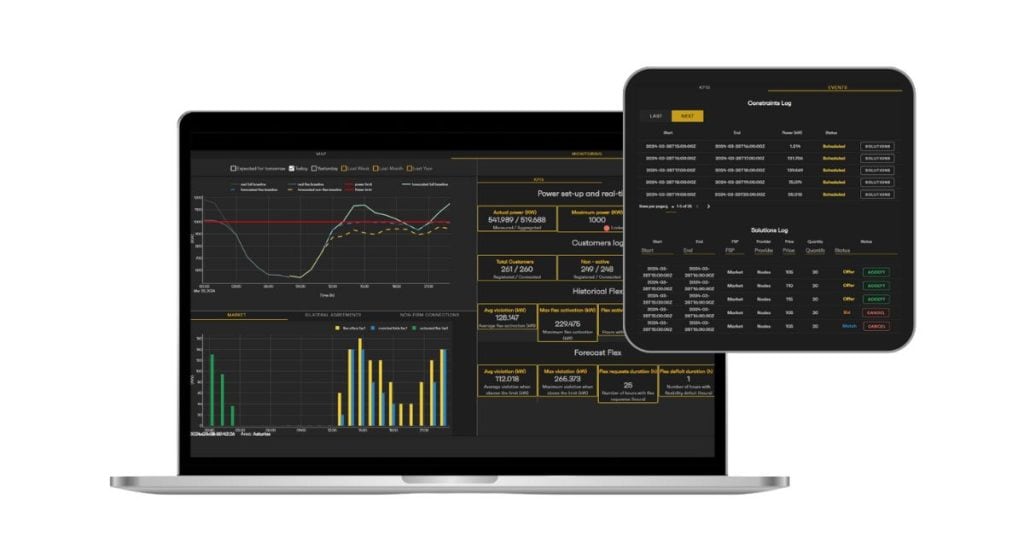In our pursuit of achieving net zero emissions, improving the quality of our energy consumption is key. And although a change in habits clearly signals the steps in the right direction – the increasing adoption of electric vehicles, renewable energy sources, and technologies like PV panels and heat pumps; to truly optimise our efficiency, significant improvements are needed in our distribution grid infrastructure.
This is reflected in the EU’s Directive 2019/944 highlights the importance of upgrading and fortifying our grid systems to facilitate the transition to cleaner energy sources. This endeavour is essential to efficiently managing the increasing demand for electricity while mitigating the potential for disruptions. Distribution System Operators (DSOs) face a particularly daunting challenge in this regard, as they are tasked with maintaining security of supply and are subject to penalties for any service interruptions.
In the worst-case scenario, Distribution networks risk becoming bottlenecks in the broader Energy transition.
Traditionally, the go-to solution for addressing these challenges has involved expanding physical infrastructure by installing new cables, substations, and associated components. This approach persists because existing tariff structures primarily compensate for capital expenditure (better known as CAPEX), failing to account for the increasing costs associated with digitalisation, data processing, and flexibility management. Consequently, Distribution System Operators (DSOs) have little incentive to shift their grid investments toward achieving a genuinely smart grid.
In the past decade, with the growing penetration of renewable energy sources, the electricity market in Europe has undergone a significant transformation. This has placed considerable pressure on both regulators and network distributors to adopt an orchestration method capable of maintaining the security of the energy supply and managing bi-directional power flows effectively.
As attention shifts to the role of DSOs in managing the complexities of modern energy systems, the recent amendment to Germany’s Energy Industry Act has resonated throughout Europe. It has sparked discussions and evaluations of the German approach to elevating grid operators to the next level – the Distribution System Operator (DSO) level. This move emphasises the importance of advancing towards smarter grid operations.
The Smart Grid Operator and Paragraph 14a
We’re not in the raise of an entire new law. A small change can take us a long way, the amendment of Paragraph §14a was heavily discussed in Germany since its effects on the daily operations of the distribution system is enormous. This is the first step in a series of changes that can be implemented to achieve a smart grid status.
Through the amendment, grid operators acquired the authority to control so-called ‘fully interruptible consumption devices’ in the low-voltage grids to relieve the grid at times when demand is high. In exchange, network operators will guarantee immediate connection of distributed energy resources and customers will get competitive prices in grid fees.
The successful implementation of the new amendment to the law necessitates that grid operators acquire several critical capabilities, which they currently lack. These include full visibility of the distribution grids and real-time grid analytics for conducting long- and short-term optimisation analyses.
These analyses are essential for three main purposes: firstly, efficiently responding to a surge in new connection requests while adhering to load and generation limitations; secondly, accurately forecasting low voltage congestion for the forthcoming hours, days, and weeks; and thirdly, actively managing and controlling flexible energy resources to align capacity expansion with demand.
Plexigrid is committed to serving German Distribution Grid Operators with the critical software, analytics, and management tools necessary to meet the latest requirements of §14a EnWG.
Starting from January 1st, 2024, all newly installed systems must comply with consumption control regulations outlined in paragraph §14a. This obligation applies if their combined grid connection capacity exceeds 4.2 kW for heat pumps and room cooling, or individually for other assets.
On the network operator side, they must immediately establish this new connection without delay. Rejecting the new asset is no longer acceptable. This represents a significant change for grid operators, who must efficiently respond to new connection requests while adhering to load and generation limitations on the network.
A new process must be established to effectively reach this milestone. Applications must be successfully collected by the grid operator to promptly instruct the meter operator to establish controllability on the requested connection.
Exploring the Digital Twin Paradigm

In times like these, a Digital Twin technology offers DSOs a powerful tool. By combining topology information with forecasting capabilities, it predicts how the grid will respond to new connections. This ensures long-term strategic capacity planning and short-term tactical planning. These capabilities help avoid or delay the need for grid reinforcements, prioritise investments where they’re most needed, and ensure cost-efficient security of energy supply, both now and in the future.
The digital twin module of Plexigrid seamlessly integrates new elements into the grid, such as switching elements, while also facilitating simulations for grid extensions in both new and existing areas. By connecting previously isolated systems through advanced data models, it enables real-time integration with multiple data sources, creating an exact replica of the network. Utilising AI models, it swiftly analyses and forecasts massive amounts of time-series data.
With a digital twin of the electrical system, users not only have a replica of current physical assets but also gain the ability to simulate various future scenarios based on present-day information. This includes projecting and analysing the impact of technologies like distributed generation, EV chargers, and heating or cooling loads with ease.
Forecasting Capability
By integrating data from various organisational silos, including smart meters, SCADA systems, GIS systems, and ERP systems, Plexigrid creates a powerful real-time network monitoring system. Using AI technology, it forecasts network behaviour, leading to increased operational efficiency and improved customer satisfaction.

Figure 2: Forecasting flexible load tool.
Orchestrating Real-Time Flexibility Management
Real-time access to flexibility bridges the gap between network infrastructure and active customers with connected flexible devices.
At Plexigrid, we prioritise solutions that empower grid operators, allowing them full control of the entirety of their network in their daily grid operations. This requires a deep understanding of network dynamics, the capability to monitor network load, and accurately forecast future congestions.
By leveraging the inherent flexibility of connected load and generation, the very devices that contribute to grid challenges can enhance network efficiency and generate value for asset owners. Our flexibility management tool serves as a grid-aware Distributed Energy Resource Management System (DERMS) specifically designed for distribution network operators.

Figure 3: Grid violations forecasting tool and solutions.

Co-written by Pär Schröder


